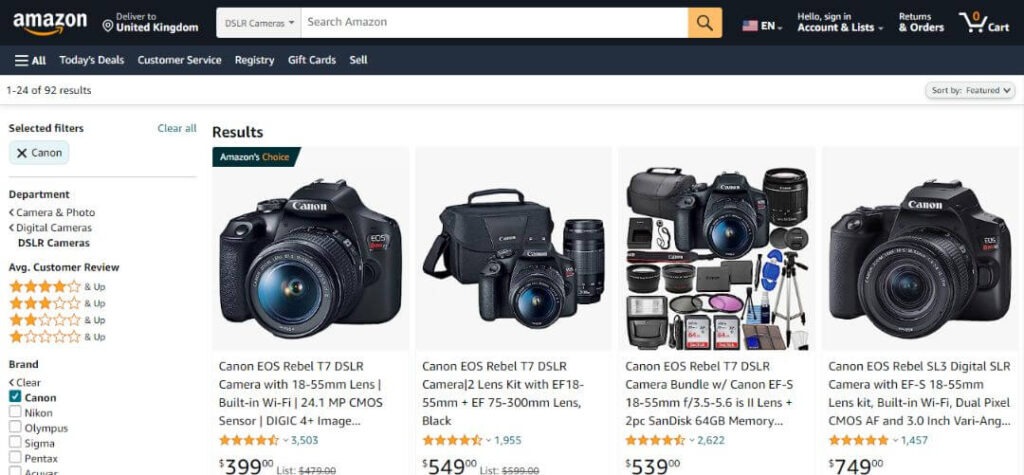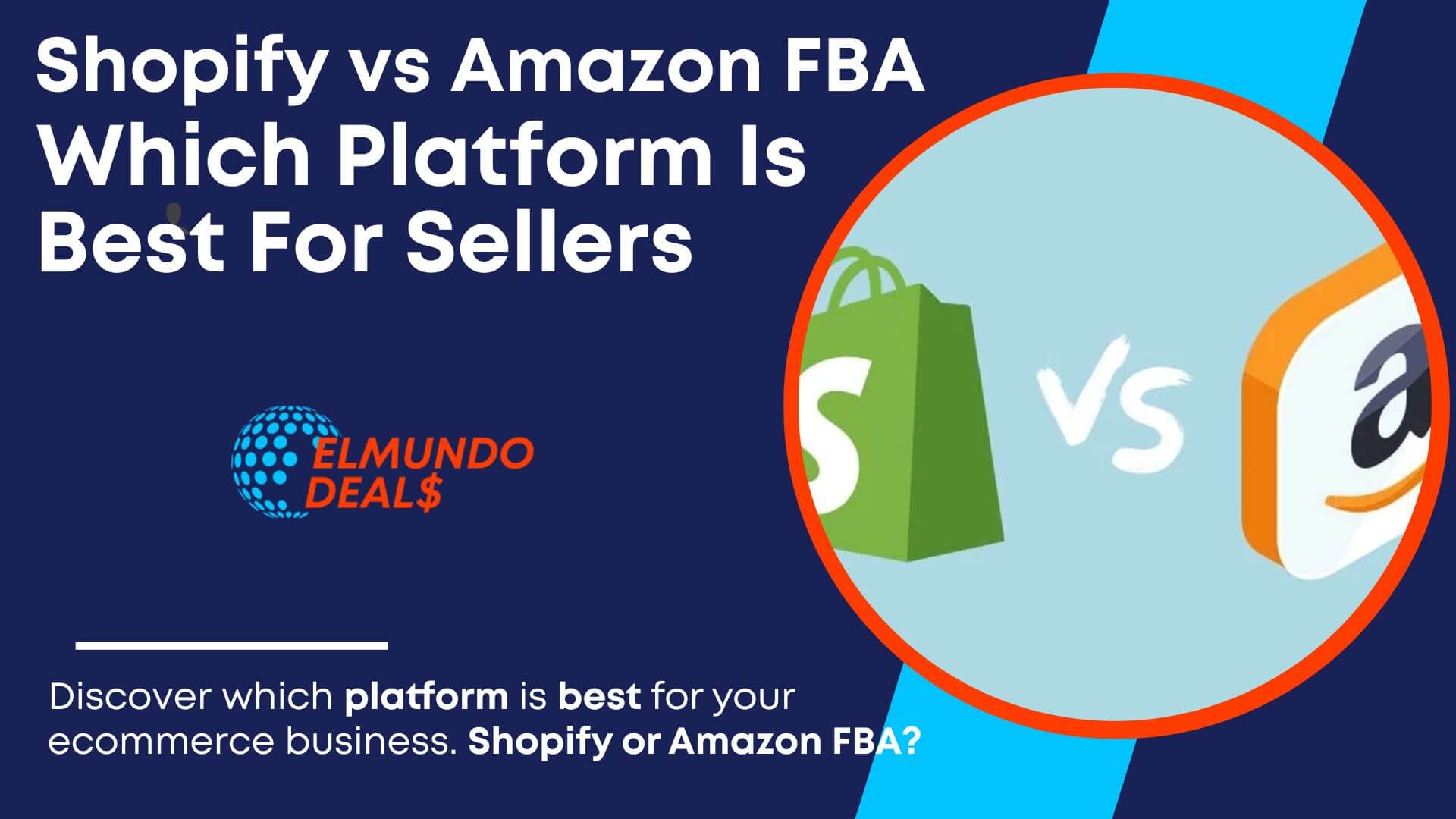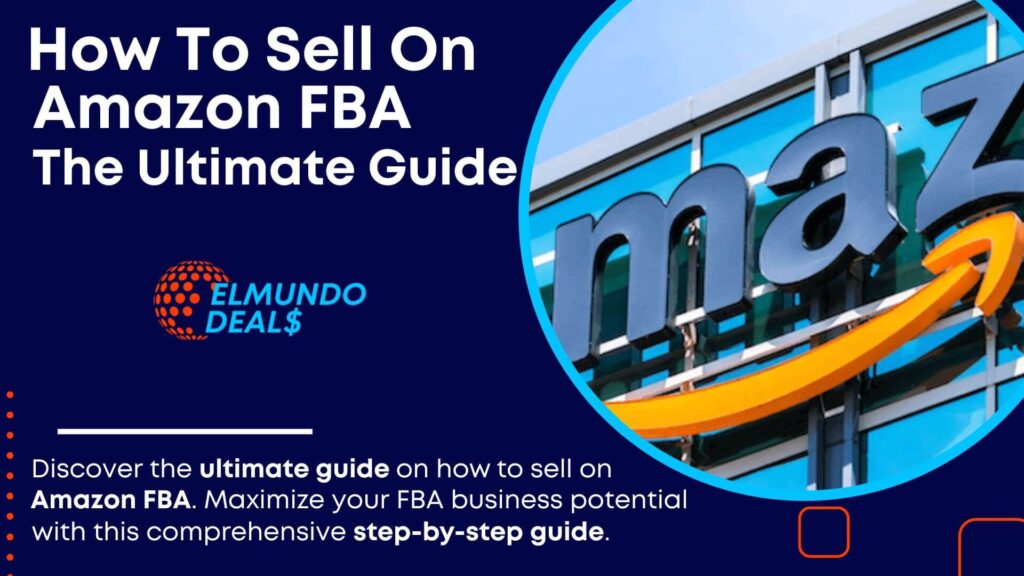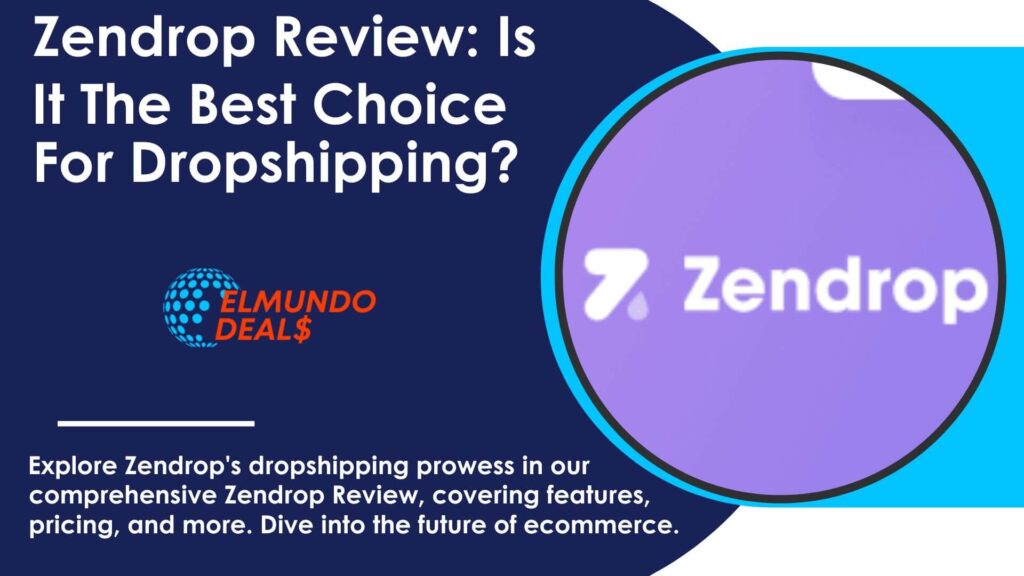Shopify Vs Amazon FBA: Which Ecommerce Platform Is Best For Online Store Sellers In 2023?
In 2023, e-commerce continues to flourish as an increasingly popular business avenue. As online sellers seek efficient platforms to showcase and sell their products, two prominent options stand out: Shopify and Amazon FBA (Fulfilment by Amazon).
While both platforms offer unique advantages, they cater to different seller needs and possess distinct characteristics. In this article, we will compare Shopify and Amazon FBA, examining their features, functionalities, and suitability for sellers in the dynamic landscape of 2023.
By determining the strengths & weaknesses of each platform, sellers can make informed decisions on which one aligns better with their business goals and maximizes their chances of success in the competitive e-commerce realm. Shopify vs Amazon FBA – which platform is best?
What Is Shopify?

Shopify is an e-commerce platform that empowers entrepreneurs and businesses to create, operate, and scale online stores. Launched in 2006, Shopify has rapidly become one of the leading platforms in the e-commerce industry, catering to businesses of all sizes, from small start-ups to established enterprises.
At its core, Shopify provides comprehensive tools and features that enable sellers to build and customize their online stores without extensive coding or technical expertise. The platform offers a user-friendly interface and intuitive drag-and-drop functionality, allowing users to design visually appealing and professional-looking websites.
One of the critical strengths of Shopify lies in its flexibility and scalability. Whether you’re selling physical products, digital downloads, or services, Shopify provides a wide range of customizable themes and templates, allowing sellers to create a unique brand identity and tailor their online stores to their needs.
Additionally, Shopify supports multichannel selling, enabling businesses to sell through various channels, including social media platforms and marketplaces.
Shopify also offers a robust back-end infrastructure to handle essential e-commerce functionalities. It provides secure hosting, reliable payment processing, and seamless inventory management. Sellers can easily manage their products, track stock levels, and fulfil orders efficiently.
The platform also integrates with numerous third-party applications and services, enabling sellers to enhance their stores with additional features such as email marketing, analytics, and customer support tools.
Furthermore, Shopify places a strong emphasis on mobile commerce. With the rise of smartphone usage, having a mobile-optimized store is crucial. Shopify provides responsive designs and mobile apps, allowing sellers to deliver a seamless shopping experience to their customers on any device.
In terms of support and resources, Shopify offers extensive documentation, tutorials, and a dedicated customer support team available 24/7. The platform’s active user community and app marketplace also provide a wealth of resources, advice, and opportunities for sellers to connect and collaborate.
While Shopify does require a monthly subscription fee, it provides a range of pricing plans to accommodate businesses of different sizes and budgets. Its user-friendly interface, extensive features, and scalability make Shopify an attractive option for entrepreneurs and businesses.

Pros And Cons Of Selling On Shopify vs Amazon FBA
Selling on Shopify and Amazon FBA (Fulfilment by Amazon) offers distinct advantages and drawbacks for online sellers. Let’s explore the pros and cons of each platform:
Pros of Using Shopify
- Scalability: Shopify offers scalability, accommodating businesses of all sizes. It provides a robust hosting infrastructure, allowing sellers to focus on growing their business.
Cons of Using Shopify

Shopify Cost for Sellers
Shopify offers different pricing plans to accommodate sellers’ varying needs and budgets. Here are the costs associated with the three primary pricing plans offered by Shopify:
Basic Shopify
This plan costs $29 per month. It provides the essential features to set up and run an online store. Some key features include the ability to sell unlimited products, access to 24/7 customer support, a website and blog, abandoned cart recovery, discount code creation, and integration with social media channels.
Shopify
This plan costs $79 per month. It includes all the Basic Shopify plan’s features and additional benefits. These additional features include professional reports, gift card creation, access to third-party calculated shipping rates, and offering lower credit card transaction fees through Shopify Payments or external payment gateways.
Advanced Shopify
This plan costs $299 per month. In addition to the features offered in the previous plans, the Advanced Shopify plan includes the following:
- Advanced report building.
- Third-party calculated shipping rates.
- Access to the Shopify API for greater customization.
- The ability to create custom discount codes.
It’s important to note that these pricing plans are subject to change, and Shopify occasionally offers promotional pricing or discounts. Additionally, transaction fees may apply depending on the payment gateway used by the seller, but Shopify Payments can be used to avoid additional transaction fees in certain countries.
Sellers should carefully evaluate their business requirements, projected sales volume, and desired features to choose the most suitable pricing plan that aligns with their budget and growth strategy.
Also check the following:
- 9 Tips For Writing Product Descriptions That Sell Instantly
- 7 Best Payment Gateways For Shopify Stores In 2023: Payment Method
- What Is Ecommerce Marketing? Strategies, Tools, Tips & More
- 25+ Best Shopify Apps To Grow Your Ecommerce Store In 2023
- 10 Unbelievable Winning Shopify Dropshipping Store Examples (2023)
What Is Amazon?

Amazon is a multinational conglomerate and one of the world’s largest and most influential companies. Amazon has evolved into a technology giant, offering various products, services, and digital innovations.
At its core, Amazon is known for its e-commerce platform, which allows individuals and businesses to buy and sell products online. With its extensive product selection and competitive pricing, Amazon has become a go-to destination for online shopping.
Amazon’s success can be attributed to its relentless focus on customer satisfaction, operational efficiency, and continuous innovation. The company has expanded into numerous countries, establishing a global presence and disrupting traditional retail models.
Additionally, Amazon has leveraged data and technology to optimize its operations, improve logistics, and enhance the overall customer experience.
Thus, Amazon has transformed from an online bookstore into a multi-faceted technology company encompassing e-commerce, cloud computing, digital content, and intelligent devices. With its customer-centric approach and relentless pursuit of innovation, Amazon has reshaped industries and become a prominent player in the global marketplace.
Pros And Cons Of Selling On Amazon FBA vs Shopify
Selling on Amazon FBA and Shopify offers distinct advantages and disadvantages for online sellers. Let’s explore the pros and cons of each platform:
Pros of Using Amazon FBA
Cons of Using Amazon
So, choosing between Amazon FBA and Shopify depends on the seller’s specific needs, goals, and resources. Amazon FBA offers access to a vast customer base, efficient fulfilment services, and Prime eligibility but comes with intense competition and limited brand control.
Shopify provides customization, multichannel selling, and scalability but requires more marketing efforts and separate fulfilment arrangements. Sellers should carefully evaluate their priorities, business model, and long-term strategy to determine which platform aligns better with their requirements.

Amazon’s Fees for Sellers
Amazon charges fees to sellers for using their platform and services. The fees vary depending on the seller’s subscription plan and the chosen fulfilment method. Here are the fees associated with selling on Amazon:
Fulfillment Fees for Individual sellers
Individual sellers on Amazon are charged referral fees, which are a percentage of the item’s price (excluding taxes). The referral fee rates vary across different product categories, ranging from 6% to 45% of the item’s sale price. It’s important to note that referral fees can also have a minimum fee per item, which varies by category.
Individual sellers are responsible for fulfilling their orders and cannot access Amazon’s fulfilment services like FBA. Hence, they are not subject to additional fulfilment fees but must account for their shipping and handling costs.
Professional plan
For sellers who opt for the Professional selling plan, which costs $39.99 monthly, additional fees and benefits apply. With the Professional plan, sellers can access Amazon’s fulfilment service, FBA.
Fulfilment by Amazon involves storing products in Amazon’s fulfilment centres, and Amazon handles the packaging, shipping, and customer service on behalf of the seller. Here are the critical fees associated with the Professional plan:
- Referral Fees: Similar to individual sellers, professional sellers pay referral fees based on the product category and the item’s sale price.
- Selling on Amazon Fees: Besides referral fees, professional sellers pay a flat $0.99 per item fee for each product sold.
- FBA Fees: FBA fees include charges for storage, picking and packing, shipping, and customer service.
It’s important to note that the specific fee structure, including referral fee rates and FBA fees, may change over time. Sellers are advised to refer to Amazon’s Seller Central or consult the latest fee schedules provided by Amazon to get accurate and up-to-date information on fees.
Sellers should consider these fees when pricing their products and assessing the profitability of selling on Amazon. Additionally, it’s essential to evaluate the benefits and services provided by Amazon, such as access to a vast customer base, fulfilment by Amazon, and Prime eligibility, to determine if the associated fees are worthwhile for their business.
Can I Use Shopify And Amazon FBA Together?
Yes, using Amazon and Shopify together in your e-commerce strategy is possible. Many sellers leverage the strengths of both platforms to expand their reach, increase sales, and diversify their online presence.
Amazon and Shopify can be integrated through various methods, including third-party apps or software that syncs inventory, orders, and product information between the two platforms. It’s essential to carefully manage inventory, pricing, and listings to avoid conflicts and ensure accurate and consistent information across channels.
Ultimately, the combination of Amazon and Shopify can offer sellers the benefits of both platforms, allowing them to reach a wider audience, maximize sales opportunities, and establish a strong brand presence in the e-commerce landscape.
Which Is The Best Ecommerce Platform?
Determining the best e-commerce platform depends on various factors such as business goals, budget, technical expertise, and specific requirements. Shopify is widely regarded as a user-friendly platform with robust features and scalability. Woo Commerce, integrated with WordPress, offers flexibility and customization options. Big Commerce provides advanced built-in features.
Magneto suits large enterprises with complex needs. Squarespace is suitable for small businesses with more specific requirements. Ultimately, the best platform is the one that aligns with your business needs, offers the desired functionality and fits within your budget and technical capabilities. Evaluating different platforms, comparing their features, and considering user reviews are essential to make an informed decision.

Read more:
- 7 Best Inspiring Ecommerce Pricing Strategies For Your Products
- 7 Best Shopify Alternatives In 2023 To Skyrocket Your Ecommerce
- The Pros And Cons Of Selling On Amazon Vs EBay – Better For Sellers?
- The Pros And Cons Of Selling Online On Shopify Vs Etsy In 2023
- Pros And Cons Of Starting A Print On Demand & Grow Your Business
Shopify vs Amazon FBA: Frequently Asked Questions (FAQs)
What is Better Amazon FBA or Shopify?
Amazon FBA provides access to a massive customer base and offers fulfilment services, while Shopify allows for more customization and control over branding. Consider factors such as your product type, target audience, scalability requirements, and fulfilment preferences when deciding which platform is better suited for your business.
Is It Better to Dropship or Amazon FBA?
Dropshipping and Amazon FBA are different business models. Dropshipping involves partnering with suppliers who handle inventory and shipping, while Amazon FBA involves storing inventory in Amazon’s fulfilment centres. Dropshipping offers lower upfront costs and less risk, but Amazon FBA provides more control over inventory and offers Prime eligibility.
Can You Make a Living off Amazon FBA?
Yes, it is possible to make a living off Amazon FBA. Many sellers have built successful businesses leveraging Amazon’s vast customer base and fulfilment services. However, success depends on product selection, pricing, marketing efforts, competition, and operational efficiency. It requires research, planning, and consistent effort to build a profitable Amazon FBA business.
Does Amazon FBA Pay Monthly?
Amazon FBA pays sellers every two weeks, typically through direct deposit. Payments are made every 14 days for sales and settlements completed during that period. It’s important to note that funds may take additional time to appear in your bank account, depending on the banking system and country.
Do You Need an LLC to Start an Amazon Business?
While having a legal entity like an LLC is not mandatory to start an Amazon business, it is recommended for various reasons. An LLC can provide liability protection, tax advantages, and a professional image.
It’s essential to consult with legal and tax professionals to understand the legal and financial implications of starting a business and determine the most suitable structure for your circumstances.
Shopify vs Amazon FBA – Which Platform Is Best: Our Final Verdict
The final verdict between Shopify and Amazon depends on your business requirements, goals, and preferences. Shopify offers more customization and control over branding, making it suitable for businesses that build a unique brand presence.
Amazon FBA provides access to a vast customer base, efficient fulfilment services, and Prime eligibility, making it ideal for sellers looking for broader reach and convenience. Consider factors like product type, target audience, scalability, control, and fulfilment preferences to make the best decision for your business.













